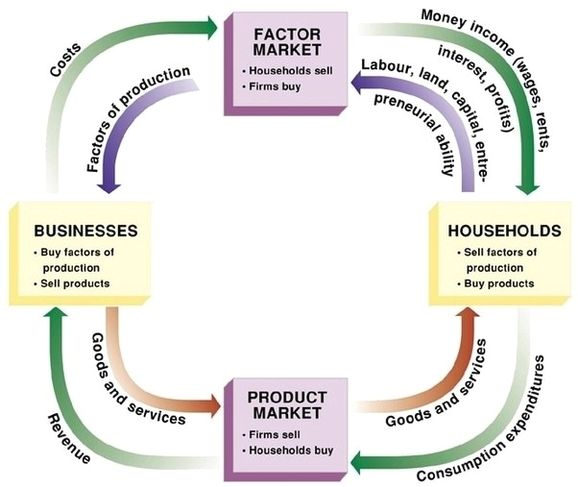See the below image for the Circular flow of economic diagram. The circular flow model of the economy distills the idea outlined above and shows the flow of money and goods and services in a capitalist economy.
This model shows the most common circular flow of income between the household sector and the business sector. There are product markets and resource markets between the two. Households purchase goods and services that businesses provide through the product market.
Like the other sectors, each flow of money is paired with a flow of a factor of production or goods and services. The fifth sector – the financial sector – is added to complete the circular flow model.


